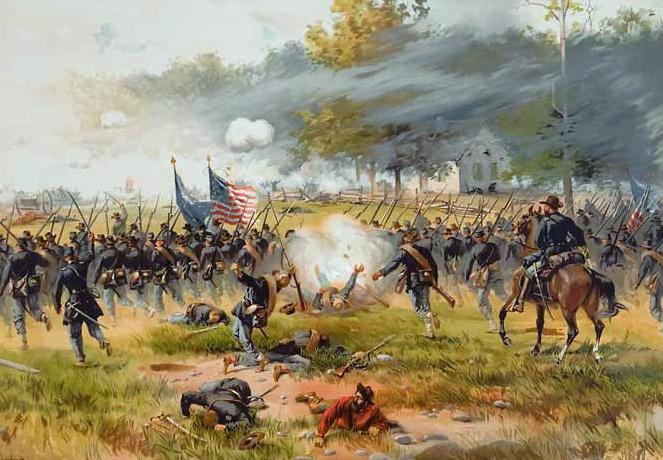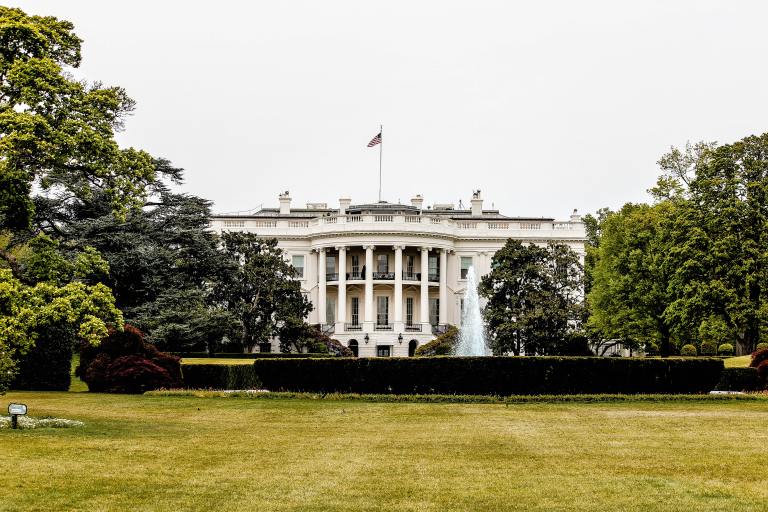How The Civil War Was Won


People who study the Civil War tend to fall in two camps. Though who obsesses about its political and social causes and then those who instead focus on the military maneuvers and battles.
While both subjects are very interesting, studying either in isolation is problematic. For instance, while the Southern cause is morally indefensible, its military strategy can yield many lessons for future generations and even just business thinkers looking for metaphors. Its soldiers—who were often outnumbered and out supplied—were also incredibly brave and worthy of admiration in that regard. Of course, the average person doesn’t have much room in their life for flanking tactics or the names of obscure generals and battlefields. And those that do, tend to zoom in on them at the expense of the greatest context and realities.
Neither gets you as close as you need to be to the most important conflict in American history.
Having written last week about the root causes and passions of the war, I thought I would write now on the reality of the war itself—the actual fighting—and what deserves some understanding.
Now obviously the war was very complicated, and though this is something I love to nerd out on, I grasp that most people are too busy for that. So while my explanations below are simple, they are important for high level understanding—and most importantly, practical application.
I am choosing to focus on just three of the most important strategic contributions to the ultimate outcome of the US Civil War.
First, the Southern Mistake(s)…

You could argue that the South began the war in error and paid for it. I’m not talking about secession here, I’m talking about firing the first shots of the war. Specifically, the South on April 12, 1861 shelled Fort Sumter—an isolated battery in the harbor of Charleston, South Carolina.
This decision had immediate ramifications. For starters, it galvanized Northern opinion who up until this point was still divided about the prospect of war. It led to an immediate call for troops and kickstarted the Union War machine. Given more time and perhaps a sympathetic position, perhaps secession might have occurred much differently.
From a larger view, it’s important to bear in mind that unlike many wars, the South controlled essentially all the territory it hoped to occupy at the start of the war. It was not attempting to cajole or force any states to join its new nation, in fact that was sort of the point. This potentially put the Union in a very difficult position. In order to end the war, it meant they would have to go through the South, state by state, and reconquer every inch of ground.
Think about how difficult it was for the US in Vietnam (and the French before them). Think about how difficult it has been in Afghanistan (for the US and the Russians before them). Think about how painful and costly the war in Iraq has been. And these were in significantly smaller theatres of combat with enemies that were even more outmatched than the Confederates ever were.
The point is this: in firing on Fort Sumter the South began the strategy that ultimately doomed it to failure—a strategy of offense. Had the South waged a purely defensive war—what is known as a Fabian strategy—it is likely that the war would have gone on much longer and potentially had a different outcome. Especially because as much attention as Lee gets as a military genius, the South’s most damaging campaigns were done by guerrilla bands like those led by John S. Mosby and Nathan Bedford Forrest.
Yet, in 1863, the Robert E. Lee began his “invasion” of the North. While daring and the source of a handful of victories, it put the rest of the South at risk. For instance, the day that the Confederates fought more or less to a draw at Gettysburg they lost unequivocally at Vicksburg many miles to the west and ceded control of the crucial Mississippi River as a result. Gettysburg was in Pennsylvania, which is pretty far North and Vicksburg was on the border of Louisiana and Mississippi, which is the deep deep South. This tells you something.
By going on the offensive, the South weakened their largest and most important competitive advantage: occupation and defense. The other lesson here is clear: optics matter. Understanding the strengths (and weaknesses) of your strategic position matter. And the decisions you make early on can doom (or ensure) your prospects.
Second, from the West…

It’s ironic that while the Civil War is known as a great war between the North and South, really it was won strategically by and from the West. Because of how complex and big the war is, most people don’t have a full picture of the marches and campaign that really won it.
Allow me to explain it in the simplest way I can. The beginning of the end of the war began when relatively unknown General named Ulysses S. Grant won two back to back victories at Fort Donelson and Fort Henry. This kicked off one of the most astonishing and genius military campaigns in history.
Coming from the Northwest, Grant marched down the Mississippi river, taking major town after town until the river was completely unlocked and controlled by Union gunships. The capture of Vicksburg effectively cut the South in half (vertically) and set up part two of his strategy.
From Vicksburg, Grant and Gen. William T. Sherman began a joint march east, eventually cutting the South in half once more (horizontally this time). Shortly after this campaign began, Grant was transferred to the Eastern theater and given the title Lieutenant General and commander of the Union armies.
Prior to Grant, a revolving door of generals had been unable to dislodge Robert E. Lee from Northern Virginia. Grant’s obstacle was this impenetrable wall of Confederate troops, who had defeated countless attacks, flanking maneuvers and charges.
Instead of trying to defeat Lee as the others had, Grant decided he would tie him up. He would keep Lee stuck where he was—fighting battle after battle—Sherman continued on the campaign to the sea nearly 60 miles wide, ripping the guts out of an enemy too overconfident and occupied to stop it. As Lincoln, quipped at the time, “Grant has the bear by the hind leg while Sherman takes off the hide.” By the time Lee realized what was happening, it was too late.
This is the maneuver that you must understand to understand how the war itself was won. It’s not as simple as Sherman’s March to the Sea (which was actually a march to the sea and then up towards Virginia) or as simple as the claim that Grant was a butcher who threw men at Lee until it broke. It was really these two strategies working in tandem—it was the thrust from West to East that the South was powerless to stop, that eventually forced their surrender.
Finally, the North’s hidden power…

The war began because of slavery, and it ended and was won because of slavery. I mean this strategically, not ideologically or ethically.
Well before the Emancipation Proclamation, Union generals began to wrestle with a complex political and military issue: what to do with all the slaves? Slaves powered the Southern war machine both in terms of hard labor and as a form of wealth. So depriving their enemy of this asset had implications on the battlefield. Increasingly, slaves began to escape from their Southern owners and defect to federal arms. This had the double effect of weakening the enemy and providing the Federal army with much needed laborers and support (which they paid for, of course).
With the Emancipation Proclamation in 1863 (timed by Lincoln with the victory at Antietam), the Union was allowed to explicitly put these former slaves to use. As word spread through the South, even larger numbers of slaves made their way to Union lines. News that their slaves had run away and production at their farms or businesses was worsening was exactly what Confederate soldiers did not want to hear—many now faced desperate pleas from home to desert and come take care of business. And in fact, many did just that.
Then, in 1863, the Union took the further step of recruiting black troops. While the Federal armies always had numerical superiority, this cemented this advantage in a massive way. By the end of the war some 200,000 African American troops were in uniform. One can imagine that these troops—which served quite well—were not only more motivated than their white comrades but added the extra component of fear, frustration and demoralization to an already exhausted Confederate army. Now their slaves were fighting and beating them on the battlefield—what hope was left?
None of this is to say that the Union was particularly open minded or honorable in how they treated black soldiers. They paid them less. They were surprised that black troops did well in battle. Early in the war, some troops actually returned slaves to their rightful Southern owners (this was essentially Lincoln’s policy until the proclamation actually). General Sherman, for his part, declined to use black troops saying he wanted to crush the Southern will to fight without allowing for the excuse that he’d had to use their slaves against them to do it. But the North was smart enough to at least make use of former slaves and freedmen in its army. It’s why it won the war.
As I mentioned in my first article, the South was just not capable of intellectually or emotionally dealing with black soldiers. First, they instituted a policy of essentially murdering black soldiers captured in uniform (which led to the cessation of prisoner exchanges with the North—sapping them of what had previously been a loophole keeping their armies supplied). They massacred black troops at Fort Pillow which led to accusations of war crimes. Late in the war, Judah Benjamin finally suggested that the South enlist slaves in exchange for freedom. The response from Georgia governor Howell Cobb says it all: “If slaves seem good soldiers, then our whole theory of slavery is wrong.”
This is the problem with an ideologically bankrupt cause. It makes you blind to strategic opportunities. It eliminates options and makes you an easier target for flexible enemies.
These are what I would consider to be the three most strategically significant parts of the war. Were there more? Of course. The Northern blockade of the South was crucial. The North’s technological and industrial superiority obviously mattered a great deal. There were also little moments here and there that had they gone differently, might have shifted the entire way and rendered all these major factors moot. But that’s how history works. It only looks certain in retrospect.
In the next part of our series, I want to talk about some specific battles and what they mean—as well as the personalities who made and defined the war. But for now, I think these three points matter a great deal.
They explain the beginning, the middle and the end of the war. They explain the big picture reasons for victories (and defeats) on the battlefield. And most importantly, I think, they allow you to understand the whole without needing to remember the names and the dates and places. Because while Philip Sheridan or Cemetery Ridge or Leonidas Polk or Kenesaw Mountain are important, they matter very little if you can’t understand what it was for, what it meant and why it happened.
Hopefully you’re a little closer to that now. ![]()




